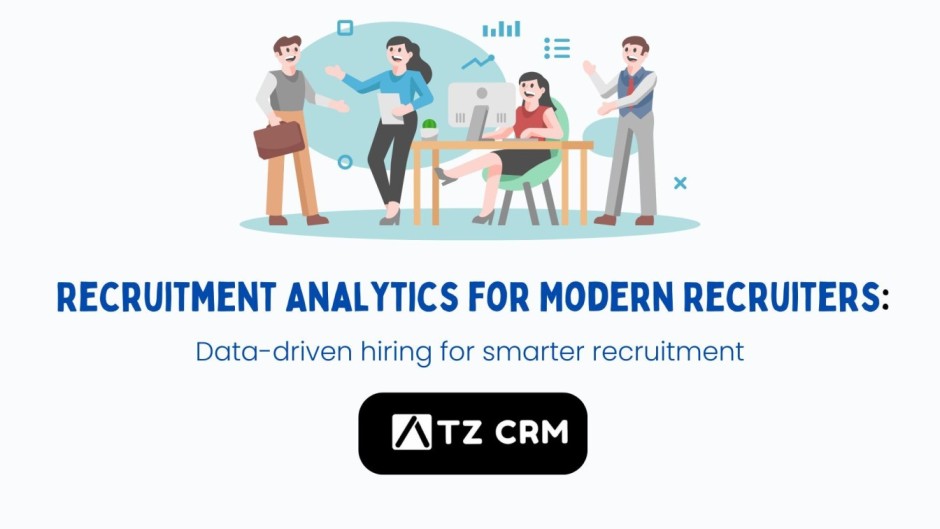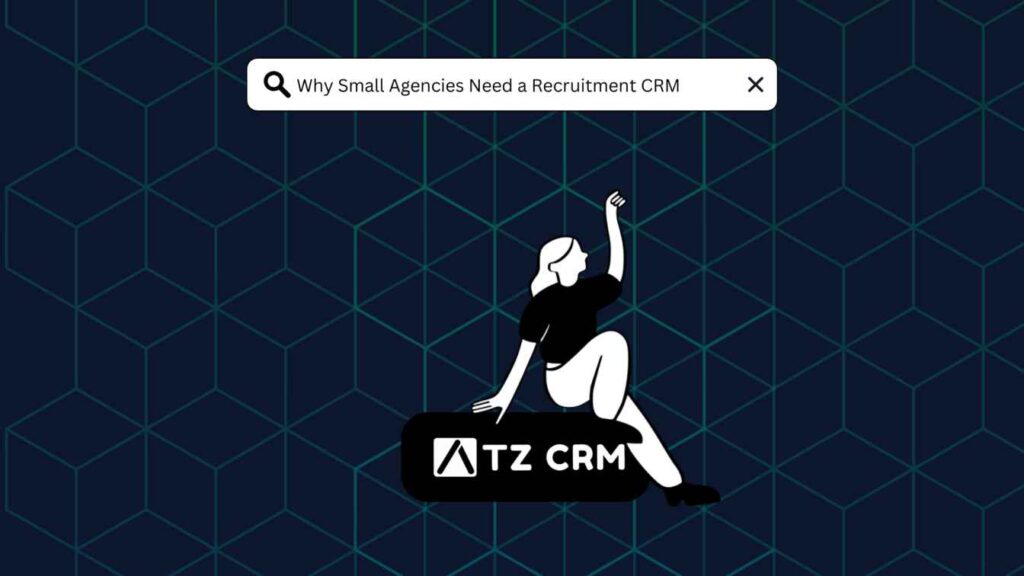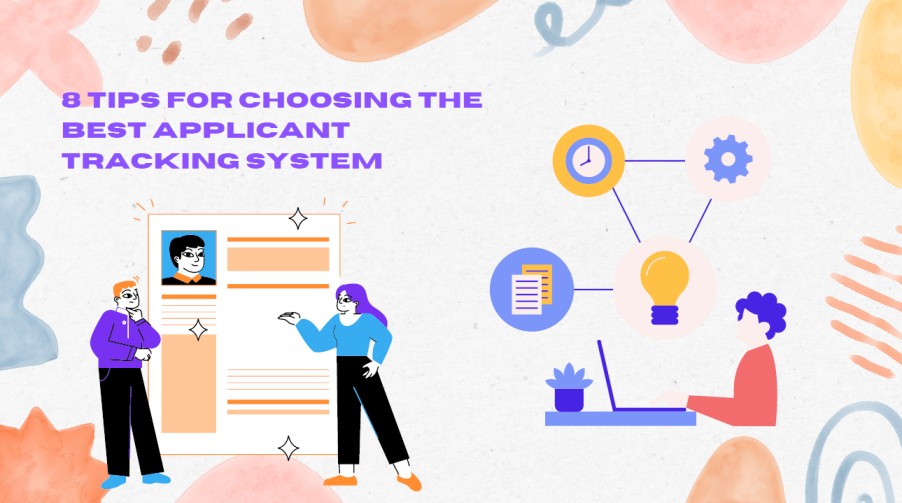Introduction
Imagine if you could know in advance which candidates would be the best fit for your company. What if you could spot problems in your hiring process and fix them using clear facts? Many companies still rely on gut feelings when hiring, but Recruitment Analytics helps recruiters make better decisions using real data.
This guide explains everything about Recruitment Analytics—what it is, how it works, the key things to track, useful tools, and how it will shape the future of hiring.
What is Recruitment Analytics?
Recruitment Analytics is the process of gathering and studying hiring data to improve recruitment strategies. Instead of guessing, recruiters can use facts and trends to hire faster, save money, and find better candidates.
Key metrices :
To make smart hiring decisions, here are some important numbers recruiters should track:
- Time-to-hire – How long it takes to fill a job.
- Cost-per-hire – The total cost of hiring a new employee.
- Candidate quality – How well new hires perform in their roles.
- Retention rate – How long employees stay with the company.
- Best hiring sources – Which job boards or platforms attract the best candidates.
- Candidate satisfaction – How candidates feel about the hiring experience.
- Offer acceptance rate – The percentage of job offers accepted by candidates.
Tracking these numbers helps recruiters make better choices and improve the hiring process over time.
Also,Looking for the best way to find top talent? Check out this How To Identify The Best Canditate For Hiring to make smarter hiring decisions .
How Recruitment Analytics Works:
Recruitment Analytics follows three main steps:
1. Collecting Data:
Data comes from job applications, recruitment software, and HR systems.
This includes resumes, interview feedback, and hiring trends.
2. Studying Hiring Patterns:
Looking at past hiring results helps recruiters see what works and what doesn’t.
For example, they might find that one job site brings in better candidates than others.
3. Making Smarter Hiring Decisions:
With data insights, recruiters can adjust their hiring process to save time and money while finding better candidates.
For instance, if the data shows that a particular job posting format attracts more qualified candidates, recruiters can optimize future job listings accordingly.
How Companies Use Recruitment Analytics :
Businesses use Recruitment Analytics in different ways to improve their hiring process. Here are a few examples:
1. Finding the Best Job Platforms:
Companies use hiring data to figure out which job sites bring in the best people. They compare platforms like LinkedIn, Indeed, and their own career page to see where the strongest candidates come from. This helps recruiters know where to focus their time and budget, so they’re not wasting energy on sites that don’t work well.
2. Predicting Which Candidates Will Succeed:
By looking at data from past hires, companies can spot what their top employees have in common. It could be certain skills, experience, or even personality traits that made them successful. Knowing this helps recruiters look for the same qualities in new candidates, making it easier to hire people who are likely to do well.
3. Speeding Up the Hiring Process:
Recruitment data also shows companies where their hiring process is slowing down. Maybe interviews are taking too long, or managers aren’t giving feedback fast enough. Once they know the problem, they can fix it — helping them hire faster so they don’t lose great candidates to other companies.
4. Improving Diversity in Hiring:
When companies track who applies and who gets hired, they can see if their process is fair to everyone. If they notice certain groups are underrepresented, they can make changes to attract a wider mix of candidates. This helps build a team with different backgrounds, which brings in fresh ideas and helps the whole company grow.
5. Reducing Employee Turnover:
Recruitment data helps companies understand why some employees leave shortly after they’re hired. By spotting patterns, they can figure out what went wrong — like hiring for the wrong skills or not being clear about the job. With this knowledge, they can hire people who are more likely to stay and grow with the company, building a stronger, more stable team.
A well-organized ATS can make all the difference in your hiring process. These 11 powerful tips for ATS efficency and data management can help you manage your data better and keep things running smoothly.
The Three Stages of Recruitment Analytics :
Recruitment Analytics can be used at different levels, depending on a company’s needs:
Level 1: Basic Tracking (Beginner)
Focuses on simple numbers like time-to-hire and cost-per-hire.
Uses spreadsheets or simple reports to track progress.
Example insight: How many applications turn into hires.
Level 2: Advanced Insights (Intermediate)
Combines different data sources for a better picture.
Measures candidate experience and recruiter performance.
Example insight: How many job offers are accepted.
Level 3: Predicting Hiring Success (Expert)
Uses data to forecast which candidates will do well in the company.
Helps businesses plan future hiring needs.
Example insight: Which hiring sources bring in the best long-term employees.
Best Recruitment Analytics Tools :
To make hiring easier, recruiters can use analytics tools. Here’s what to look for:
Key Features Of Good Recruitment For Analytic Tools :
- Easy-to-use dashboards – Simple reports that show important data.
- Real-time insights – Instant updates on job applications and hiring trends.
- Seamless integration – Works well with other hiring software.
- AI-powered insights – Helps predict which candidates will be a good fit.
Top Recruitment Analytics Tools :
- ATZ CRM – Tracks applicants, analyzes hiring trends, and improves decision-making.
- HireVue – Uses video interviews and assessments to screen candidates.
- Eightfold – Matches candidates with jobs based on their skills and experience.
- Visier – Offers deep insights into hiring trends and employee retention.
- Pymetrics – Uses simple online tests to measure a candidate’s abilities.
- Entelo – Helps recruiters find top talent quickly.
- Phenom – Personalizes the hiring process to improve the candidate experience.
- iCIMS Talent Cloud – Provides a suite of recruitment tools for tracking and analyzing hiring data.
- Greenhouse Recruiting – Offers data-driven insights to optimize the hiring process.
Challenges and Best Practices in Recruitment Analytics :
- Messy or incomplete data – If data isn’t accurate, it leads to bad decisions.
- Resistance to change – Some recruiters prefer old methods over new tools.
- Too many data sources – Data spread across different systems can be hard to manage.
- Lack of data skills – Some recruiters may need training to understand analytics.
- Data security concerns – Handling large amounts of hiring data requires strong security measures.
Best Practices To Overcome These Challenges :
- Set clear hiring goals – Know what you want to achieve with analytics.
- Keep data accurate – Regularly clean and update hiring data.
- Choose the right tools – Use software that fits your needs.
- Encourage a data-driven mindset – Train your team to use data effectively.
- Continuously improve – Regularly review hiring data and adjust strategies as needed.
- Ensure data privacy – Follow best practices to protect candidate information.
The Future of Recruitment Analytics :
Recruitment Analytics is evolving, bringing new improvements such as:
- Better hiring predictions – AI will make hiring forecasts more accurate.
- More fair hiring practices – New tools will help reduce hiring bias.
- More personalized hiring – Companies will improve candidate engagement.
- Automated hiring processes – AI will take care of repetitive tasks.
- Workforce planning with data – Companies will use analytics to plan future hiring needs.
- AI-powered chatbots – Virtual assistants will streamline candidate communication.
- Improved employee engagement tracking – Companies will use data to monitor employee satisfaction and retention.
By staying up to date with these trends, businesses can stay ahead in the competitive job market.
Conclusion:
Recruitment Analytics is changing how companies hire. By using data to track performance, predict candidate success, and improve hiring strategies, businesses can build stronger teams and make better hiring decisions. Whether you’re just starting with basic tracking or moving toward predictive hiring, using analytics will give you an edge in recruitment. ATZCRM is a powerful tool that can help recruiters streamline their hiring processes and make data-driven decisions for better outcomes.
Experience the full power of ATZ CRM with a free trial – no credit card needed!
Test all our features before making a commitment. Ready to see our ATS + CRM in action?


